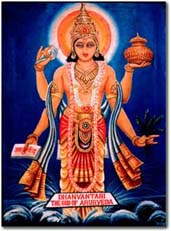kamleshayurveda.com
 Madana Modaka
Madana Modaka
Following up on our previous post about the proposed legalization of marijuana in Sri Lanka, the estimated 16,000 Ayurvedic practitioners are watching developments with interest. There is no Bill pending in their legislature as yet. According to a government spokesman, "Our first step is to formulate a National Policy document for the indigenous medicine sector which will become part of the National Health Policy."
Presently, the locally registered Ayurvedic practitioners obtain cannabis by applying to the Ayurvedic Drugs Corporation, an agency that distributes cannabis seized from unauthorized consumers.
Cannabis is known by many names in the country and its medicinal and pain-relieving properties have long been touted in ancient Hindu literature and in the local Ayurvedic practice. Creating a reasonable policy on its use is a complicated proposition.
Going by the opinions of the Ayurvedic practitioners and officials of the Ayurvedic Drug Corporation as well as the National Dangerous Drugs Control Board, the effective way of dealing with cannabis seems to hang in the balance between defining its value in Ayurvedic medicinal preparation and its abuse as a "dangerous narcotic" in unauthorised productions.
Such products like Madana Modaka gulis (globlets), sold in "petti kades" (vendor huts) near schools, are known to be purchased by school boys for "kicks." On the other hand, Madana Modaka is a legitimate medicinal preparation in Ayurvedic practice and is sold by the Ayurvedic Corporation and other reputable Ayurvedic practitioners, while its preparation method is clearly stated in the Ayurvedic Pharmacopoeia of Sri Lanka - its ingredients being cannabis leaves and seeds fried in ghee, among other local herbs such as thipal, kottan, corriander, asamodagam and namal renu. Madana Modaka is usually recommended as a sexual stimulant and for flatulence and loss of appetite, among other things.
Among over 20 medicinal preparations mentioned in the Ayurvedic
Pharmacopoeia that contain cannabis, are Buddharaja kalka, Jathipalaadi choornaya, Hinguladhi rasaya (watee), Kameswara modakaya and Ranahansa rasayanaya (pindi).
Rural peasants and low-income people in urban areas were traditionally the major users of these medicines, however now that their use is being adopted by the upper classes, the Sri Lankan government seeks to consolidate the source.
He explains that the purpose of the proposed legislation is to allow only the Commissioner of Ayurveda of the Ayurvedic Department to grow cannabis in one central location, after estimating how many kilos would be needed by the country's Ayurvedic practitioners per year and how many acres could produce that amount, with due protection being accorded to the area. A parallel can be drawn with opium, which is imported by the Ministry of Health and issued to medical practitioners.
The US prohibition profiteers can deny it all they like, but history talks and thousands of years of medicinal use can't be wrong. Our own legislators would do well to take notice of this model.

0 Comments:
Post a Comment
Subscribe to Post Comments [Atom]
<< Home